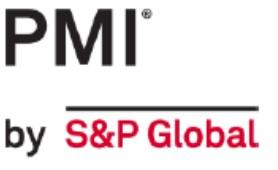The May edition of the Global Manufacturing Purchasing Managers’ Index (PMI) compiled by J P Morgan using the data from S&P Global was very marginally higher than April’s low point, although the output element fell for the 2nd month running, mainly due to China (see below).
As suggested by the flash estimate, the UK saw another reduction in its manufacturing PMI with the reading of 54.6 being the lowest since January 2021. Although growing, output, total new orders and employment all decelerated; there is an element of good news however in that while output of consumer goods fell for the first time in 15 months, growth accelerated in the investment goods category and it was also the only one of the sub-sectors to see growth in orders. Export orders fell for the 8th time in the past 9 months with survey respondents attributing this to Brexit difficulties, transport delays, shipping disruptions and loss of orders due to the war in Ukraine.
The Euro-zone also saw the manufacturing PMI fall, in this case to its lowest level for 18 months. However, despite a small improvement in output growth, total new orders fell for the first time since June 2020 while the index was also lowered by a further easing of suppliers’ delivery times which lengthened by the second weakest extent since the start of 2021. Within the Euro-zone, only Germany and Spain saw their manufacturing PMI improve compared to April and although it still has the strongest reading, the index for the Netherlands slipped to 57.8 which is its lowest for 18 months. Italy and Ireland also saw a substantial fall in the PMI with the former also registering an 18-month low at just 51.9.
In the non-Euro EU countries, Hungary saw the largest fall in the PMI reading between April and May among the countries that we cover, although it should be noted that they do often have large swings from month-to-month. There were also lower readings in the Czech Republic and Poland with the latter slipping into negative territory at 48.5 (for the first time since June 2020) as a result of a combination of a fall in both output and orders while delivery delays, while severe, eased slightly. The manufacturing PMI for Sweden improved slightly compared to April.
Elsewhere in Europe we see another example of the perverse effect of suppliers’ delivery times on the calculation of the manufacturing PMI; Russia moved back into positive territory despite both orders and sales falling and almost entirely because of a very sharp rise in suppliers delivery times. The manufacturing PMI reading for Turkey was unchanged at 49.2, which means it has been below the crucial 50 level for three consecutive months and there was a fall in the reading for Switzerland although at 60.0 it continues to have the highest reading of all the countries/regions that we cover in this report.
In the Americas, only the USA saw a lower PMI reading than in April but it was still the highest in the region at 57.0. Mexico finally emerged from its 26-month run of negative PMI readings to reach 50.6 but this is where the good news ends because, like Russia, this was driven by a lengthening of suppliers’ delivery times with both total orders and output falling (export orders were, however, up), although there was also an increase in employment adding to the index in May. Both Canada and Brazil managed a small increase in their PMI reading.
Finally, in Asia, there was an improvement in the PMI for China but it was still below the crucial 50 level for the 3rd month running with smaller reductions in output and new orders as some of the Covid restrictions eased. There was a fall in the PMI for the ASEAN region and in India, Japan South Korea and Taiwan, although with the exception of Taiwan which saw its reading fall to exactly 50, the lowest since June 2020, these changes were only marginal.
Across the 25 countries and two regions that we monitor, only China (which had the lowest reading at 48.1), Turkey and Poland were in negative territory, with Taiwan exactly on the crucial 50 level; we have already mentioned that Switzerland has the highest PMI reading again this month. Comparing between April and May, Hungary had the largest reduction in the manufacturing PMI reading while the largest improvement came in Russia and Brazil although in both cases this was driven by longer suppliers’ delivery times.
The S&P Global (the new owners of IHS Markit) PMI reports are available on their web-site at https://www.pmi.spglobal.com/Public/Release/PressReleases and we have prepared a summary charts report which is available to download below. You should note however, that the PMI readings for Hungary, Sweden and Switzerland are not compiled by S&P Global but can be found with an appropriate internet search.

